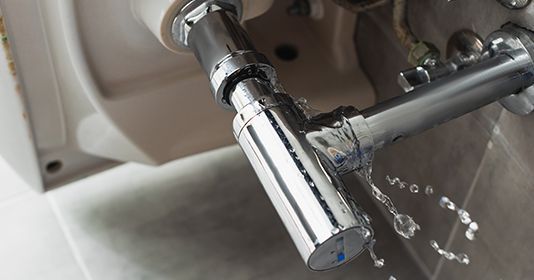Are you considering replacing your bathroom faucet but wondering how long it will take? The answer depends on a few factors, but with the help of a licensed plumber, the process can be quick and easy.
The first factor to consider is the type of faucet you want to install. If you're replacing an old faucet with a similar style, the installation process may be straightforward. However, if you're upgrading to a new style or brand, there may be additional steps required to ensure a proper installation.
Another factor to consider is the condition of your plumbing. If your plumbing is old or in poor condition, it may take longer to remove the old faucet and install the new one. Your plumber may also need to make additional repairs or upgrades to ensure your new faucet functions properly.
On average, a professional plumber can replace a bathroom faucet in 1 to 2 hours. However, this duration can vary depending on the factors mentioned above.
Steps for Replacing a Faucet
To give you a better idea of the steps that need to be taken when a bathroom faucet is replaced, here’s what’s involved:
- Close the Water Supply
Locate the shutoff valves under the sink and shut off the supply of water by turning the valves clockwise.
2.
Remove the Old Faucet
Remove any mounting hardware that’s securing the old faucet to the sink. Use pliers or a wrench to loosen any nuts or bolts holding the faucet in place. Once loosened, lift the old faucet off the sink.
3.
Clean the Sink’s Surface
Use a scraper or putty knife to remove any old putty or adhesive from the sink’s surface. Wipe down the surface with a clean, dry cloth to remove any debris.
4. Install the New Faucet
Place the gasket or rubber seal onto the sink’s surface where the faucet will sit. Install any mounting hardware that came with the new faucet. Carefully place the new faucet onto the sink and tighten any nuts or bolts with a wrench or pliers.
5. Reconnect the Water Supply Lines
Reconnect the water supply lines to the new faucet. Use a wrench or pliers to tighten the nuts or connectors.
Steps for Replacing a Faucet
To give you a better idea of the steps that need to be taken when a bathroom faucet is replaced, here’s what’s involved:
- Close the Water Supply
Locate the shutoff valves under the sink and shut off the supply of water by turning the valves clockwise.
2.
Remove the Old Faucet
Remove any mounting hardware that’s securing the old faucet to the sink. Use pliers or a wrench to loosen any nuts or bolts holding the faucet in place. Once loosened, lift the old faucet off the sink.
3.
Clean the Sink’s Surface
Use a scraper or putty knife to remove any old putty or adhesive from the sink’s surface. Wipe down the surface with a clean, dry cloth to remove any debris.
4. Install the New Faucet
Place the gasket or rubber seal onto the sink’s surface where the faucet will sit. Install any mounting hardware that came with the new faucet. Carefully place the new faucet onto the sink and tighten any nuts or bolts with a wrench or pliers.
5. Reconnect the Water Supply Lines
Reconnect the water supply lines to the new faucet. Use a wrench or pliers to tighten the nuts or connectors.
6. Turn on the Water Supply
Turn on the shutoff valves under the sink and test the new faucet for leaks.
7. Check for Leaks
Turn on the water supply and check for any leaks around the base of the new faucet or from the supply lines.

Can I Replace My Own Faucet?
Yes, you can replace a faucet yourself with some basic plumbing skills and the right tools. However, if you’re uncomfortable with plumbing activities or if you encounter any unexpected problems during the installation process, it is always a good idea to seek help from a professional plumber. Improper installation could result in leaks or damage to your plumbing system, so it's important to make sure the job is done correctly.
How Hard Is It?
Replacing a bathroom faucet can be a moderate-level DIY project that requires some basic plumbing knowledge and tools. The difficulty of the project can depend on a few factors, such as the type of faucet you are installing, the age and condition of your plumbing system, and your level of experience with plumbing tasks.
If you are replacing a standard center-set or single-handle bathroom faucet with a similar model, the process should be relatively straightforward and require only basic plumbing skills. However, if you are installing a more complex or high-end faucet, such as a widespread or wall-mounted faucet, the installation process may be more involved and require additional tools and expertise.
It's important to follow the manufacturer's instructions carefully and make sure you have all the necessary tools and materials before starting the project. If you encounter any unexpected issues or difficulties during the installation process, it's always a good idea to seek help from a professional plumber.
Superior Plumbing: Your All-in-one Plumbing Partner
If you're in the Metro Atlanta area and looking for a reliable plumbing company to help with your bathroom faucet replacement, look no further than Superior Plumbing. Our team of licensed and experienced plumbers can handle any plumbing issue, big or small. Contact us today to schedule your appointment and experience the Superior Plumbing difference.
In addition to
bathroom faucet replacement, our team offers a wide range of
plumbing
services, including leak detection,
water heater repair and installation,
drain cleaning, and more. We're available 24/7 for emergency plumbing services and always strive to provide excellent customer service.








